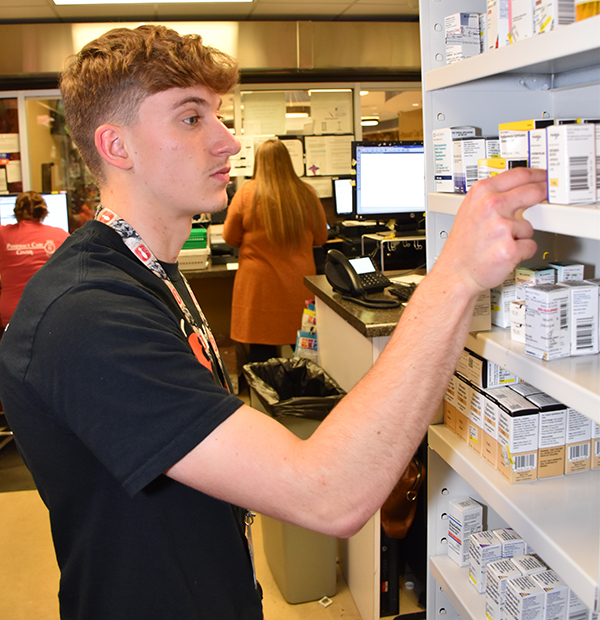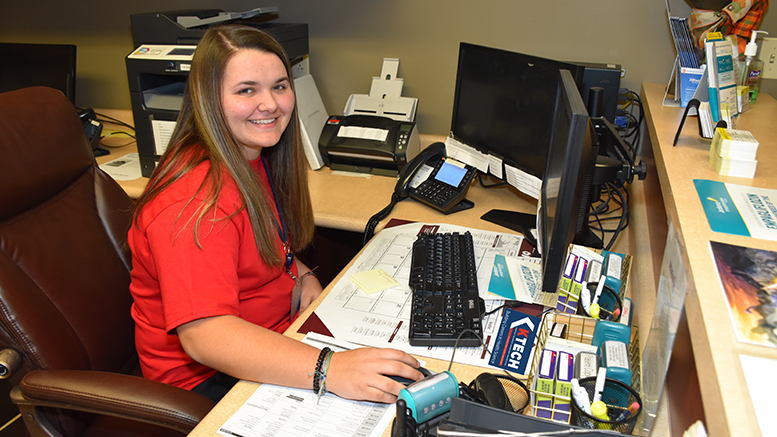Motivated high school students in Kentucky’s Appalachian region can move into healthcare apprenticeships, allowing them to earn while they learn, thanks to the K-Tech pilot program overseen by Hazard Community and Technical College (HCTC).
K-Tech, which stands for Kentucky Advanced Technical College High, was launched by the state government last spring to help meet employers’ needs for future workers in STEM-related occupations through a youth apprenticeship model.
The selection of HCTC as the pilot site for K-Tech “allows us to show that youth apprenticeship models can be successful in rural areas,” says President Jennifer Lindon, who described the program at a recent meeting on college and career readiness co-hosted by the American Association of Community Colleges and AASA, The School Superintendents Association.
This project “promotes technical programs and trades to students at an early age as viable and lucrative career options,” Lindon says.
The pilot is supported by a three-year $673,000 STEM apprenticeship grant to the state from the U.S. Education Department.
HCTC is leading the K-Tech partnership with three schools in Perry County: Perry County Central High School, Buckhorn High School and Hazard High School. Ten high school students are currently participating and working as paid apprentices at the Appalachian Regional Medical Center, Primary Care Centers of Eastern Kentucky and the University of Kentucky’s Center of Excellence in Rural Health.
Timothy Koogler, K-Tech director at HCTC, expects the program will grow to 15 or 20 apprentices in January.
“Employers wanted to start slow and grow from there,” he says.
Dual credits and mentors
The program starts with career exploration for eighth-graders, Koogler says. Ninth-graders who express an interest in healthcare start taking dual-credit classes at their high school.
The students also have an opportunity for job shadowing in the 10th grade, Koogler says. They visit participating employers to get a first-hand look at healthcare professions so they can decide if that’s what they really want to do.

John Clemmons, a senior at Hazard High School, is a healthcare apprentice through K-Tech.
In the 11th grade, they choose one of four healthcare pathways at HCTC – community healthcare worker, surgical technology, nursing, medical assistance, or pharmacy technology – and take additional dual-credit courses at their high school.
Students participate in a youth apprenticeship in their junior and senior years. At the same time, each student is matched with an industry mentor for the duration of the program who progressively builds opportunities for practical projects and problem-solving activities that connect classroom learning to real-life situations and applications.
The apprentices work at least six hours a week. If they do well, that experience can lead to weekend and summer work and, eventually, a full-time job, Koogler says.
The apprenticeships are competency-based, unless like most apprenticeships, which require apprentices to complete a certain number of training and work hours, says David Horsemen, associate commissioner in the Kentucky Education Department’s Office of Career and Technical Education.
After they graduate from high school, the K-Tech students transfer to the community college where they continue to work toward additional certificates and an associate degree. If they want to pursue nursing, for example, they can enter HCTC’s nursing pathway, earn credits leading to a certificate as a certified nursing assistant (CNA), a credential as a licensed practical nurse and an associate degree as a registered nurse.
The dual credit courses and work-based experience ensure that students will be ready to step into a permanent healthcare job, Koogler says.
“Employers told us they hired students with nursing degrees from other colleges who couldn’t handle patient care. That’s something they should have found out earlier,” he notes. “With K-Tech, “they’re ahead of the game. They can find out whether a career in healthcare is the right fit, and if it is, they can have a CNA, pharmacy technician or community health credential before they leave high school.”
A team effort
Koogler calls K-Tech a team effort. The county has a large shortage of professionals in healthcare and employers realize it’s a great opportunity to help students get a foot in the door.
The curriculum was developed with input from participating employers. The high school teachers and administrators decide which students can participate, based on such factors as attendance and grades.
As the intermediary, “the college helps students plan their program so the credits will count,” Koogler says. “We’re trying to find our niche in all this.”
He would like to see the program expand to nursing homes and other industries, such as manufacturing.
The K-Tech program could eventually expand to other colleges and other careers, but here are no immediate plans to do so, Horseman says. “With apprenticeships, it takes two or three years to see how it’s moving along.”

